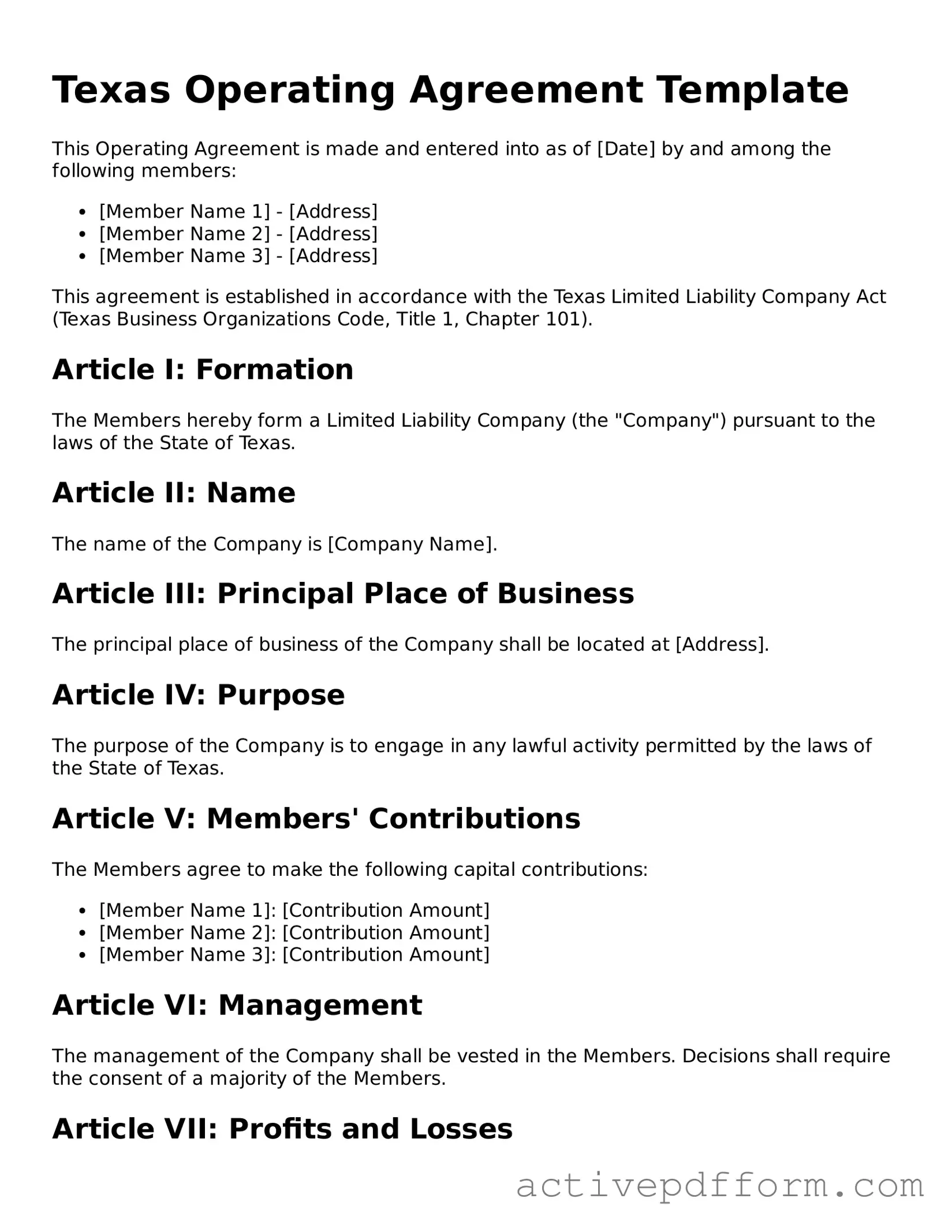Texas Operating Agreement Template
This Operating Agreement is made and entered into as of [Date] by and among the following members:
- [Member Name 1] - [Address]
- [Member Name 2] - [Address]
- [Member Name 3] - [Address]
This agreement is established in accordance with the Texas Limited Liability Company Act (Texas Business Organizations Code, Title 1, Chapter 101).
Article I: Formation
The Members hereby form a Limited Liability Company (the "Company") pursuant to the laws of the State of Texas.
Article II: Name
The name of the Company is [Company Name].
Article III: Principal Place of Business
The principal place of business of the Company shall be located at [Address].
Article IV: Purpose
The purpose of the Company is to engage in any lawful activity permitted by the laws of the State of Texas.
Article V: Members' Contributions
The Members agree to make the following capital contributions:
- [Member Name 1]: [Contribution Amount]
- [Member Name 2]: [Contribution Amount]
- [Member Name 3]: [Contribution Amount]
Article VI: Management
The management of the Company shall be vested in the Members. Decisions shall require the consent of a majority of the Members.
Article VII: Profits and Losses
Profits and losses of the Company shall be allocated to the Members in proportion to their respective contributions as outlined in Article V.
Article VIII: Distributions
Distributions shall be made to the Members at the times and in the amounts determined by the Members, consistent with Texas law.
Article IX: Indemnification
The Company shall indemnify its Members to the fullest extent permitted by Texas law.
Article X: Amendments
This Operating Agreement may be amended only in writing and signed by all Members.
Article XI: Governing Law
This Agreement shall be governed by and construed in accordance with the laws of the State of Texas.
IN WITNESS WHEREOF, the undersigned have executed this Operating Agreement as of the date first above written.
Member Signatures:
- [Member Name 1] ____________
- [Member Name 2] ____________
- [Member Name 3] ____________
